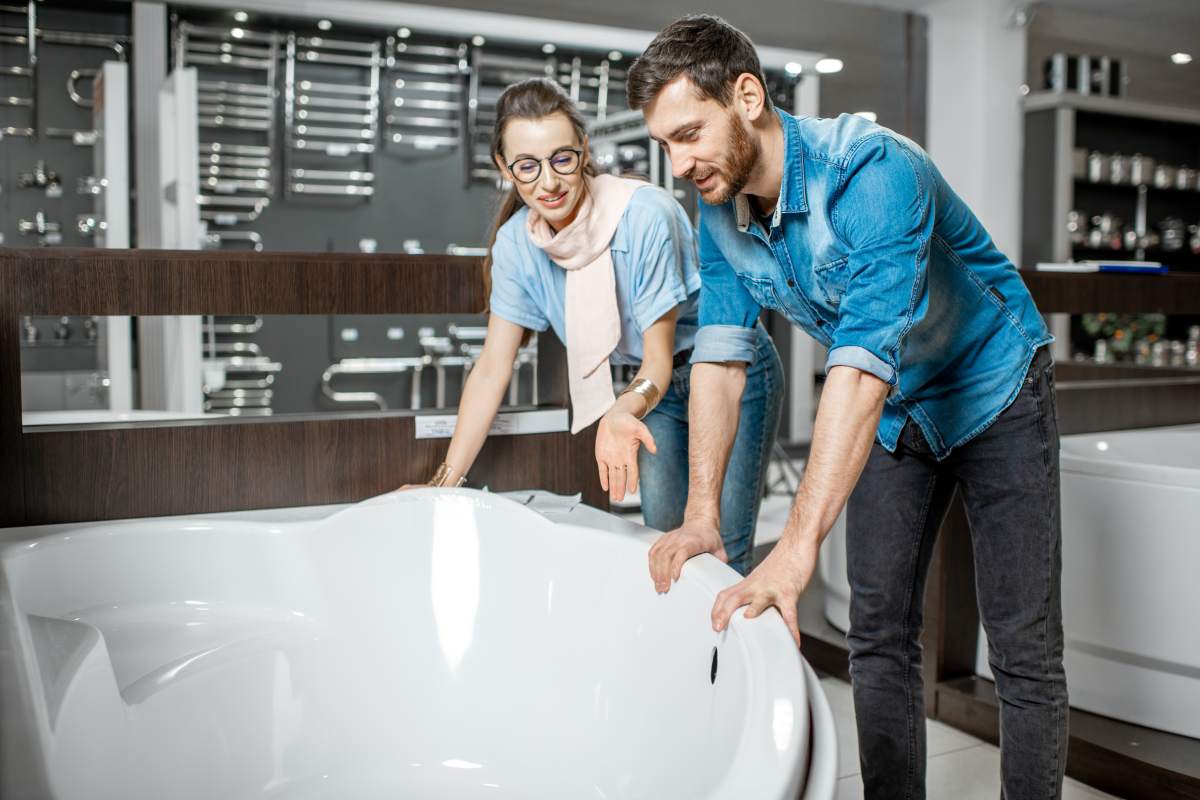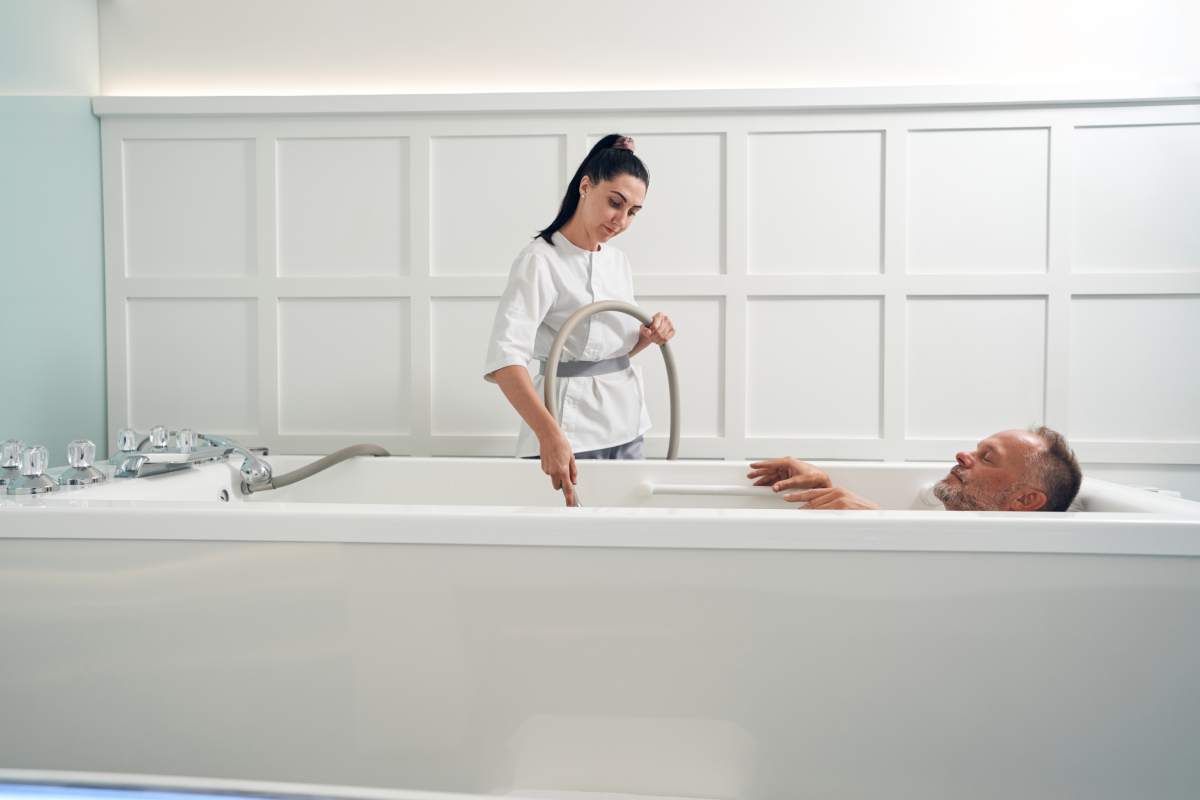
What Should You Know Before Buying a Bathtub for Your House?
This guide will cover everything you need to know before buying a bathtub for your house. Read this now for more information
A bathtub can transform your bathroom into a haven of relaxation and luxury. However, purchasing the right bathtub requires careful consideration of several factors, from size and style to material and functionality. Whether you’re renovating or building a new home, understanding these factors is crucial for making an informed decision.
This guide will cover everything you need to know before buying a bathtub for your house.
You might also read:
- What is a Laminate Sheet Backsplash? The Advantages and Disadvantages of Laminate Sheet Backsplash
- 5 Simple Carpet Cleaning Tips from Experts
1. Types of Bathtubs
Bathtubs come in various styles, and choosing the right type depends on your bathroom layout, preferences, and how you plan to use the tub. Some of the most common types include:
- Freestanding Bathtubs: These stand-alone tubs can be placed anywhere in the bathroom, making them an ideal focal point. They come in various shapes like oval, rectangular, or clawfoot designs. Freestanding tubs are perfect for larger bathrooms where space isn’t an issue.
- Alcove Bathtubs: The most common type of tub, these are installed against three walls, with one open side. This design is space-efficient and ideal for smaller bathrooms.
- Corner Bathtubs: As the name suggests, corner tubs fit into a corner and are often larger, offering more space to stretch out. They are great for master bathrooms but may not fit in smaller spaces.
- Drop-in Bathtubs: These are installed into a platform or deck and offer a sleek, modern look. They require more installation work but can give a luxurious appearance.
- Walk-in Bathtubs: Ideal for people with mobility issues, walk-in tubs have a door that opens and closes, allowing easy access without stepping over high sides.
2. Material Choices
The material of your bathtub will affect not only its aesthetic but also its durability, heat retention, and ease of cleaning. Here are some common bathtub materials to consider:
- Acrylic: Lightweight, durable, and available in a wide range of shapes and colours, acrylic is one of the most popular materials. It’s easy to clean and retains heat well, but it can scratch or dent if not handled carefully.
- Fibreglass: A more affordable option, fibreglass is lightweight but less durable than other materials. It may crack over time and doesn’t retain heat as effectively as acrylic.
- Cast Iron: Known for its durability, a cast iron tub can last for decades. It retains heat well, making it ideal for long, relaxing baths. However, these tubs are very heavy, so you’ll need to ensure your bathroom floor can support the weight.
- Steel: Enameled steel tubs are another durable choice, offering a smooth, shiny finish. They are more affordable than cast iron but don’t retain heat as well.
- Stone Resin: A higher-end material, stone resin bathtubs offer a luxurious look and excellent heat retention. These tubs are durable and visually appealing but are also among the more expensive options.
3. Size and Space Considerations
Before purchasing a bathtub, measuring the available space is crucial. Make sure to consider not only the size of the tub but also the room required for installation and plumbing.
- Length and Width: Standard bathtubs are typically around 1.5 to 1.7 metres (150-170 cm) in length and 70-80 cm in width. Freestanding and corner tubs can be larger, while alcove tubs are generally more compact.
- Depth: The depth of the tub impacts how much water it holds and how immersed you’ll feel. A standard tub is about 35-45 cm deep, while soaking tubs may offer depths of 50-60 cm or more for a fuller soaking experience.
- Weight: Heavier bathtubs, such as cast iron or stone resin, may require additional floor reinforcement. Check the weight of the tub when filled with water to ensure your bathroom’s structure can handle it.
4. Comfort and Ergonomics
Your bathtub should not only look good but also be comfortable for regular use. Consider the following comfort-related aspects:
- Ergonomic Design: Some bathtubs are designed with a sloped backrest or armrests to provide more comfort when soaking. Testing a few bathtubs by sitting in them at the store can help you determine which feels the best.
- Tub Shape: The shape of the tub—whether oval, rectangular, or round—affects how comfortable it is to sit in. Oval tubs tend to feel roomier, while rectangular tubs fit better in smaller spaces.
- Headrests and Jets: If you’re looking for extra relaxation, some tubs come with headrests, built-in armrests, or massage jets. These features are ideal for people who enjoy long, therapeutic baths.
5. Installation Requirements
The installation process of your new bathtub is a critical consideration. Depending on the type and material of the tub, installation can range from a simple drop-in to a more complex and time-consuming process.
- Plumbing Requirements: Make sure the tub you choose works with your existing plumbing system. If not, plumbing alterations may be necessary, which can increase the cost.
- Floor Reinforcement: As mentioned earlier, heavier bathtubs may require additional floor reinforcement. Make sure to consult a contractor or engineer to determine if your floor can support the weight.
- Electrical Needs: If your bathtub includes features like whirlpool jets or LED lighting, it may require electrical wiring. Factor in the cost and complexity of installing these features.
6. Energy Efficiency and Water Usage
Water usage is an important factor, especially if you’re environmentally conscious or concerned about water bills.
- Water Capacity: Larger tubs require more water, which can lead to higher energy and water costs. If water conservation is a priority, consider a smaller tub or one with a lower capacity.
- Insulation: Some bathtubs come with built-in insulation to help retain heat, allowing you to enjoy a warm bath for longer without adding more hot water. This feature can improve energy efficiency.
7. Cost and Budgeting
The price of a bathtub can vary widely based on the material, size, and features. Here’s a general price range to consider:
- Basic Fiberglass or Acrylic Tubs: AUD 500-1,500
- Cast Iron or Steel Tubs: AUD 1,500-3,500
- Luxury Freestanding or Stone Resin Tubs: AUD 3,500 and up
- Whirlpool or Air-Jetted Tubs: AUD 2,000-5,000, depending on features
Besides the cost of the tub itself, factor in installation, plumbing, and any necessary structural changes, which could add significantly to the overall cost.
8. Style and Aesthetic
Your bathtub should complement the overall design of your bathroom. Think about the style and aesthetic you want to achieve:
- Traditional vs. Modern: Freestanding tubs like clawfoot designs lend themselves to a more traditional or vintage look, while sleek, rectangular drop-in tubs fit modern and minimalist designs.
- Colour: While white is the most common colour for bathtubs, you can also find tubs in various colours and finishes to match your bathroom’s theme.
9. Maintenance and Durability
Regular maintenance is essential for keeping your bathtub in good condition. Some materials require more care than others:
- Acrylic and Fiberglass: Easy to clean but may require more frequent maintenance to avoid scratching.
- Cast Iron and Steel: More durable and resistant to damage, but their enamel finish may chip over time.
- Stone Resin: Requires specific cleaners to maintain its finish but is generally low-maintenance.
Conclusion
Choosing the right bathtub for your house involves more than just picking one that looks good. By considering factors like type, material, size, installation, comfort, and cost, you can make an informed decision that suits your needs, lifestyle, and budget.
Whether you’re aiming for a simple soaking experience or a luxurious spa-like retreat, the right bathtub can enhance your home and your relaxation experience.


